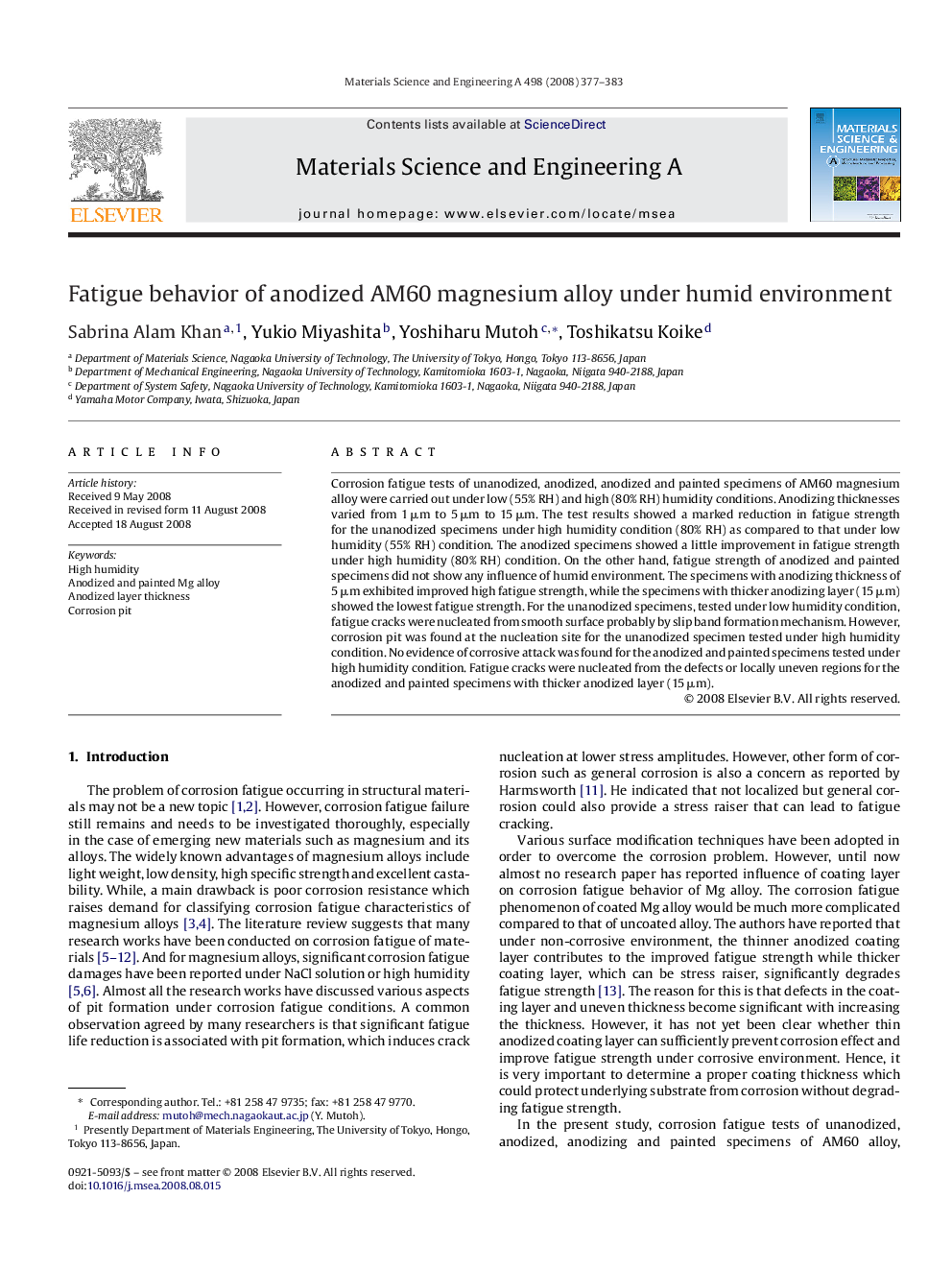| Article ID | Journal | Published Year | Pages | File Type |
|---|---|---|---|---|
| 1581450 | Materials Science and Engineering: A | 2008 | 7 Pages |
Corrosion fatigue tests of unanodized, anodized, anodized and painted specimens of AM60 magnesium alloy were carried out under low (55% RH) and high (80% RH) humidity conditions. Anodizing thicknesses varied from 1 μm to 5 μm to 15 μm. The test results showed a marked reduction in fatigue strength for the unanodized specimens under high humidity condition (80% RH) as compared to that under low humidity (55% RH) condition. The anodized specimens showed a little improvement in fatigue strength under high humidity (80% RH) condition. On the other hand, fatigue strength of anodized and painted specimens did not show any influence of humid environment. The specimens with anodizing thickness of 5 μm exhibited improved high fatigue strength, while the specimens with thicker anodizing layer (15 μm) showed the lowest fatigue strength. For the unanodized specimens, tested under low humidity condition, fatigue cracks were nucleated from smooth surface probably by slip band formation mechanism. However, corrosion pit was found at the nucleation site for the unanodized specimen tested under high humidity condition. No evidence of corrosive attack was found for the anodized and painted specimens tested under high humidity condition. Fatigue cracks were nucleated from the defects or locally uneven regions for the anodized and painted specimens with thicker anodized layer (15 μm).
